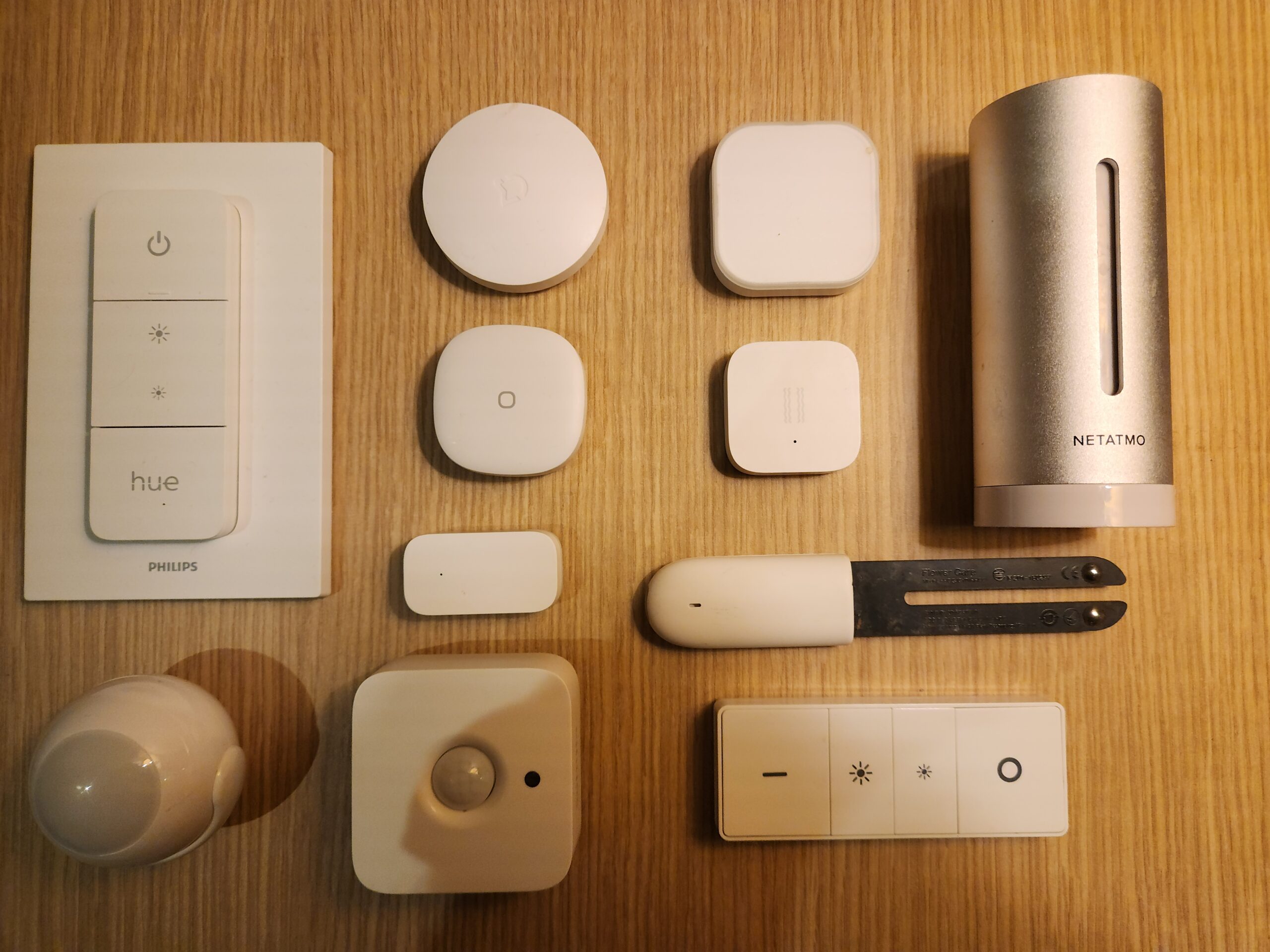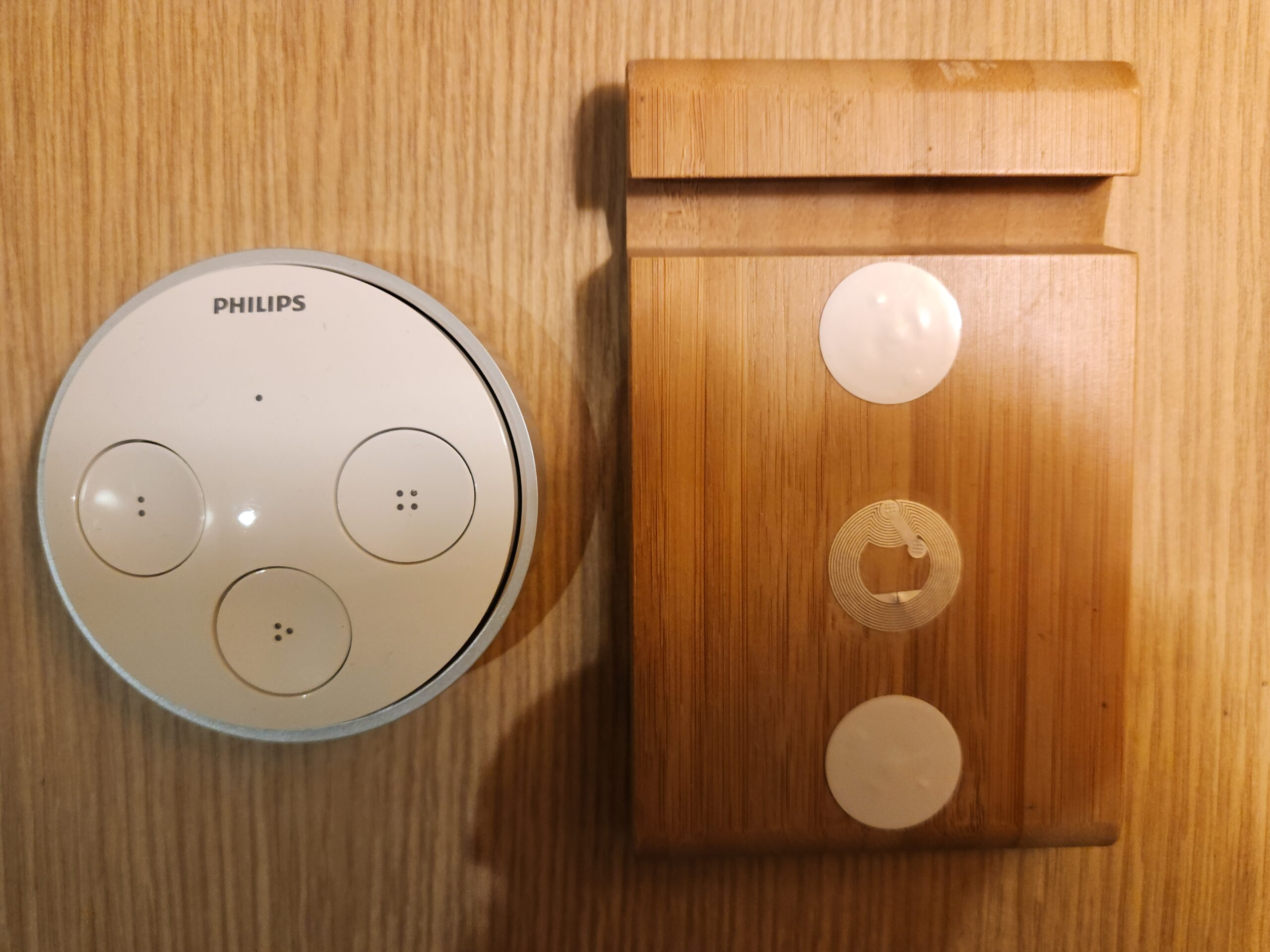Smart home and smart home cinema are very creative hobbies. Smart devices and the platforms in which they are embedded allow us to set automations that make our everyday life easier. We save time, money, and energy, protect the environment, entertain ourselves, and last, but not least, exercise our mind.
However, ‘smart’ is still young. Thus, it suffers from several limitations. At times such limitations might be very frustrating. The ‘Smart home naysayers’ essays discuss the negative aspects of ‘smarting’ things out that need to be addressed for a ‘set and forget’ smart home and smart home cinema.
Devices and batteries
Most smart devices that trigger automations use batteries. Examples include motion sensors, door/window sensors, vibration sensors, water leak sensors, temperature and humidity sensors, buttons and remote controls And batteries need to be replaced.

Different smart devices (e.g. remotes, sensors, buttons) that use batteries.
Now, there are some brands the devices of which eat batteries like crazy as opposed to others that do not. Depletion of batteries is frustrating for many reasons.
When batteries run out, devices become unreachable, automations break, alarms do not function properly, and the family members complain. No more peace of mind. Naturally, the frequency of changing batteries plays an important role here.

Two examples of smart devices that do not use batteries: the Hue tap (left) and NFC tags (right).
How often we change batteries
Let’s see an example. In my house I have more than 60 such devices spread in various areas some of which are hard to reach.
Now if I must change the batteries of all 60 devices four times per year then I will change batteries 240 times in one year, i.e., 20 times per month. In other words, every three days I must cope with a device that is running out of batteries and goes unreachable. This is boring.
The situation gets better when the battery change frequency becomes lower (see Table). For me in an ideal peace of mind scenario we do not change batteries in more than one device per month (last two scenarios in the table).
| Battery change frequency for a system with 60 battery powered smart devices | How many times we change batteries per year | How many times we change the batteries per month | We change the battery of one device every |
| Four times per year | 240 | 20 | 1.5 days |
| Twice per year | 120 | 10 | 3.0 days |
| Once per year | 60 | 5 | 6.0 days |
| Every two years | 30 | 2.5 | 12 days |
| Every four years | 15 | 1.25 | 24 days |
| Every five years | 12 | 1 | 30 days |
A real life example
II have used a wide variety of smart devices and for a long time:
- Hue motion sensors, remotes and buttons
- Smartthings motion, door/window and water leak sensors
- Fibaro and Aeon motion sensors and door/window sensors
- Ikea smart remotes and buttons
- Switchbot buttons
- Xiaomi buttons and door/window sensors
- Aqara vibration sensors
- Netatmo sensors· and
- Smanos door/window sensors.
I couldn’t cope with Ikea smart remotes and buttons when connected to the Smartthings hub. I had to change batteries every two to three days. I just got rid of all six of them.
The situation is better, but still suboptimal, for Smarthings devices. I change batteries from one to three times per year, depending on the device.
Things are optimal for Fibaro, Aeon, Xiaomi, Aqara, Netatmo and Switchbot devices. I change batteries almost once per year.

Some types of batteries used in smart devices. Note: high diversity is good for ecosystems but not for batteries.
However, the real champions, reaching the ideal conditions, are Hue and Smanos devices. Their batteries last more than two to three years and more than five years respectively.
Conclusion
Changing batteries too often turns the ‘smart’ aspect boring, It is also expensive and has an important footprint on the environment. Not to mention that it requires a large reserve of a wide variety of batteries.
Thus, battery duration is a crucial characteristic in deciding selection of a smart device. Potential users must search the internet for finding information on device battery duration. Companies must always try to produce battery efficient devices. To this end customers have an important role to play: don’t buy battery inefficient devices.

2 Comments
Andrianna · November 21, 2023 at 3:11 pm
very helpful!!!!! you are the best
Kostas Stergiou · November 21, 2023 at 3:25 pm
Thank you very much.